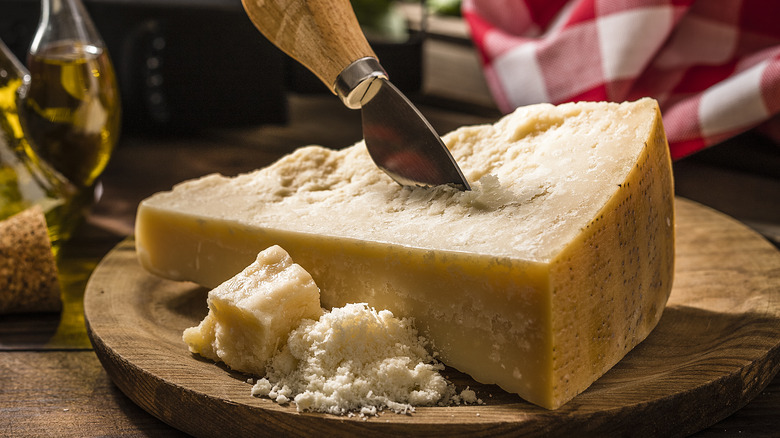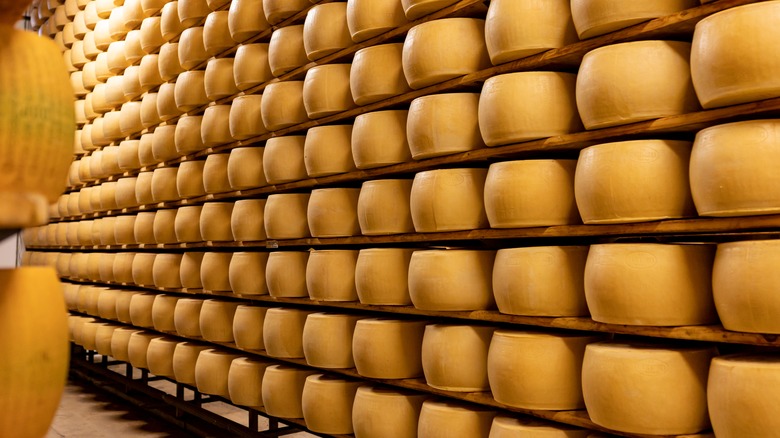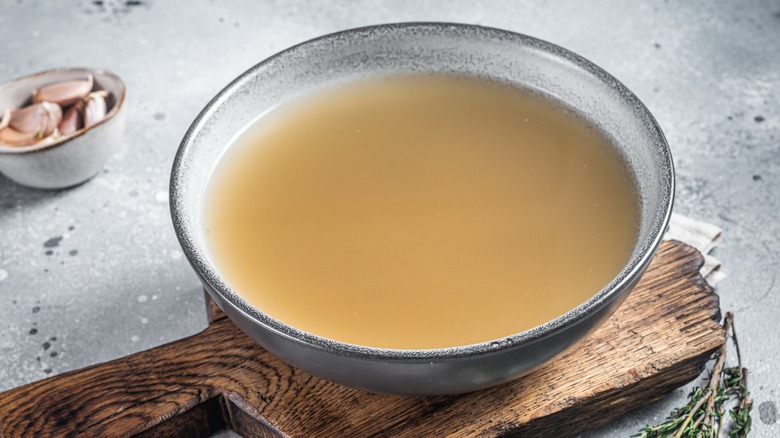Parmesan Rinds Are The Key To Super Creamy Sauces
When it comes to cheeses, parmesan is a powerhouse. Sprinkle it over pasta, scrambled eggs, or savory breakfast toast, and your meal instantly improves. But it's not just the soft center of parmesan that can enhance your food's taste and texture, nor should this ingredient only be added at the last minute. If you're tossing the rind in the trash, you're missing out on an opportunity to incorporate creaminess and complexity throughout the cooking process. When you've grated your chunk of cheese down to its hard, curved edge, throw this into a cooking pot for a full-bodied, deeply delicious sauce.
Parmesan often stars as the primary ingredient in cheesy sauces like Alfredo, but it also excels in a supporting role in other recipes for dressing pasta that might not typically include cheese, such as ragù or marinara. In these cases, the umami flavors of parmesan amplify the savory notes of ingredients like ground meat or tomatoes. As the rinds simmer in the cooking sauce, the cheese melts, so as you stir, you'll notice the sauce thickening to a super creamy consistency.
How a cheese scrap enhances texture and flavor
You can choose to make your sauces entirely from scratch, or add parmesan rinds to store-bought pasta sauce like Giada De Laurenttis to save time and effort. Either way, this method connects you with the long tradition of cucina povera-style cooking, which has defined how Italian nonnas have cooked for centuries, maximizing every ingredient.
If you're curious about the differences between parmesan and Parmigiano-Reggiano, and how they might influence this technique, there are a few things to consider. The primary distinction between these two cheeses lies in their origins. Parmigiano-Reggiano must be produced in specific provinces of the Emilia-Romagna region of Italy, adhering to strict regulations. In contrast, parmesan can be made anywhere globally, and its production methods vary. While opting for the brand name (which can be pricier for various reasons, including international import tariffs) isn't necessary, one aspect to note for maximizing the rind's effect is the cheese's age. Parmesan is one of those foods that improves with time, so seek out cheese aged at least 10 months. This process allows it to develop nutty, brothy, salty flavors and its uniquely gritty, yet pleasantly unctuous consistency, which transforms into silkiness when cooked.
More ways to make use of parmesan rinds
Besides enhancing your sauces, parmesan rinds can be utilized in a surprisingly wide range of dishes. Add a rind to a pan of simmering rice for an exceptionally rich risotto, or let it simmer in a pot of soup — this is particularly effective with Italian classics like minestrone or pasta e fagioli. Parmesan rinds alone can create a remarkable base for a simple, yet luxurious stock that you can use to deeply infuse flavor into kitchen staples like couscous, farro, and most grains cooked in water. The soaking technique for Julia Child's unforgettable beans also recommends adding rinds to boiling pots of standout legumes.
If you're unsure what to do with your parmesan rinds just yet, storing them for later use is straightforward. Place them in an airtight container and store it in your freezer, where they will remain usable for up to a year.



